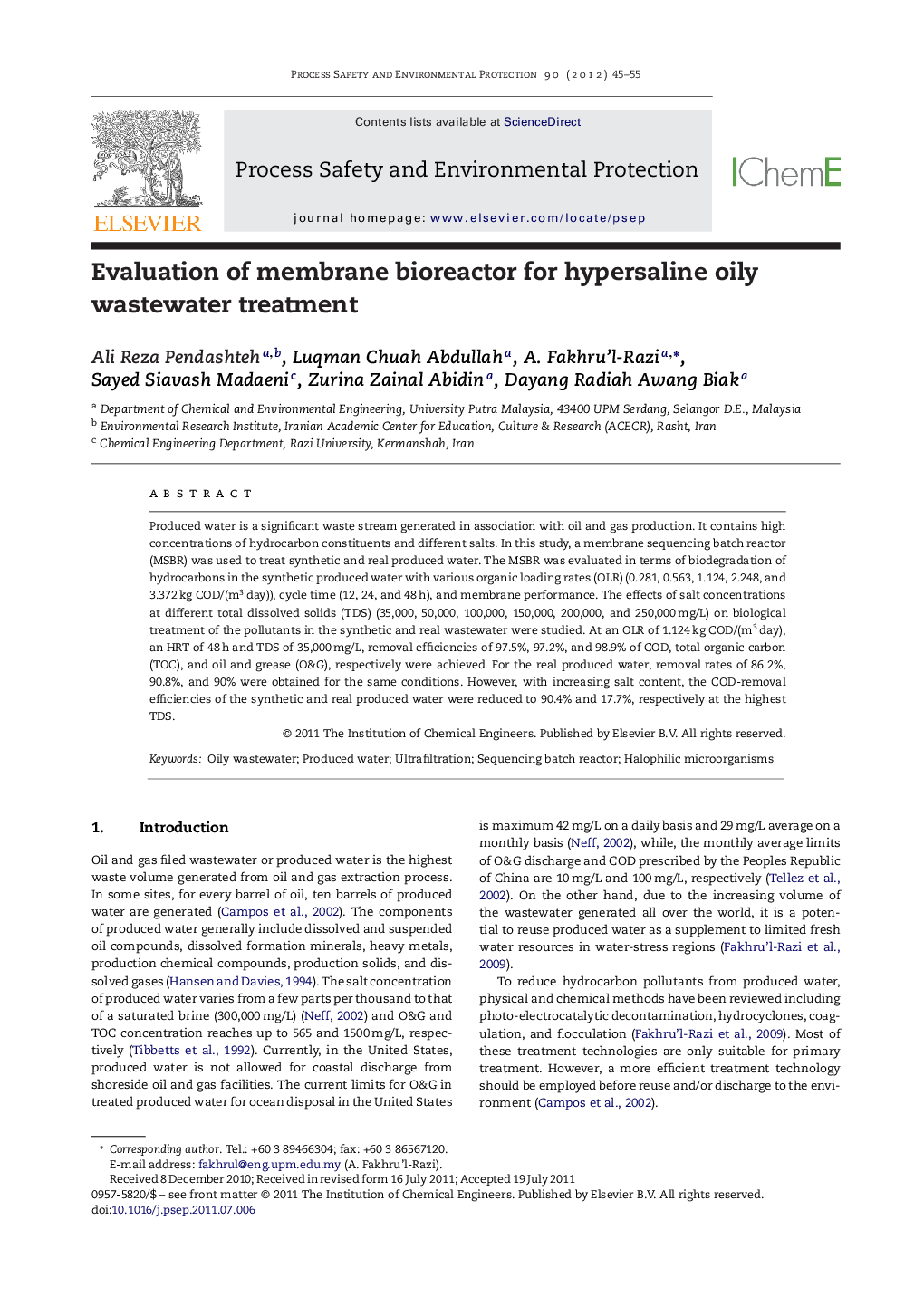| Article ID | Journal | Published Year | Pages | File Type |
|---|---|---|---|---|
| 588536 | Process Safety and Environmental Protection | 2012 | 11 Pages |
Produced water is a significant waste stream generated in association with oil and gas production. It contains high concentrations of hydrocarbon constituents and different salts. In this study, a membrane sequencing batch reactor (MSBR) was used to treat synthetic and real produced water. The MSBR was evaluated in terms of biodegradation of hydrocarbons in the synthetic produced water with various organic loading rates (OLR) (0.281, 0.563, 1.124, 2.248, and 3.372 kg COD/(m3 day)), cycle time (12, 24, and 48 h), and membrane performance. The effects of salt concentrations at different total dissolved solids (TDS) (35,000, 50,000, 100,000, 150,000, 200,000, and 250,000 mg/L) on biological treatment of the pollutants in the synthetic and real wastewater were studied. At an OLR of 1.124 kg COD/(m3 day), an HRT of 48 h and TDS of 35,000 mg/L, removal efficiencies of 97.5%, 97.2%, and 98.9% of COD, total organic carbon (TOC), and oil and grease (O&G), respectively were achieved. For the real produced water, removal rates of 86.2%, 90.8%, and 90% were obtained for the same conditions. However, with increasing salt content, the COD-removal efficiencies of the synthetic and real produced water were reduced to 90.4% and 17.7%, respectively at the highest TDS.
► We used isolated halophilic hydrocarbon degrader microorganisms in a MBR. ► We studied treatment of oily and saline wastewater. ► MSBR is a robust system at different salinities and organic loading rates. ► MSBR effluent is able to be re-used for different options.
